Name John Lilly Role Writer | Albums E.C.C.O. | |
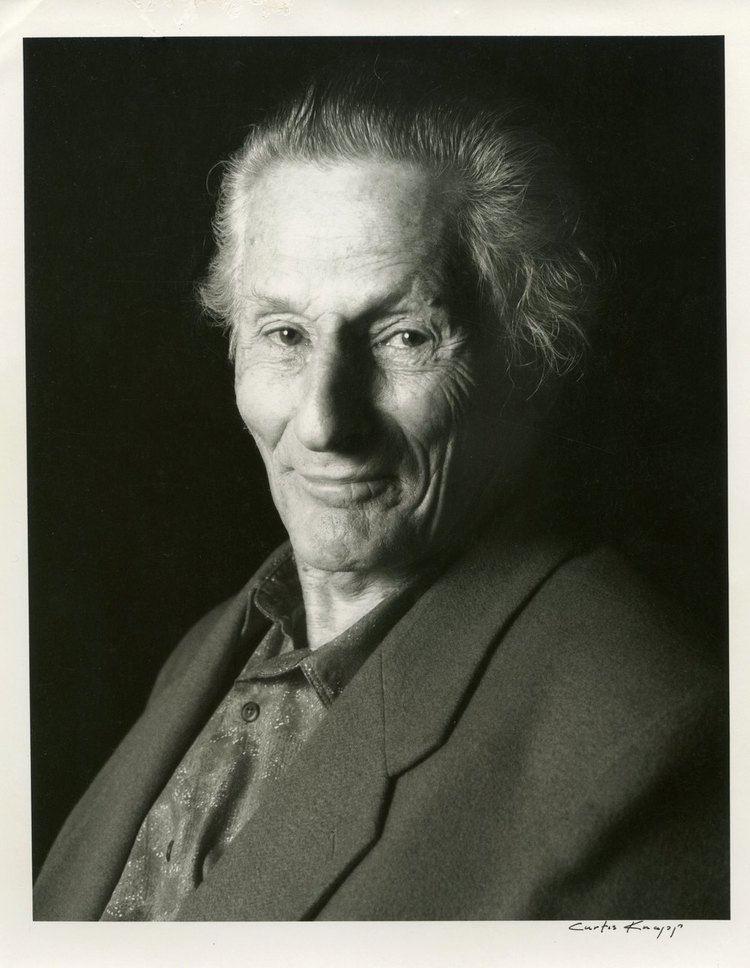 | ||
Died September 30, 2001, Los Angeles, California, United States Books Programming and Metaprog, The Scientist, The Deep Self, The Dyadic Cyclone, The Center of the Cyclone Similar People | ||
John C. Lilly - Creativity Is Uncertain
Dr. John Cunningham Lilly (January 6, 1915 – September 30, 2001) was an American physician, neuroscientist, psychoanalyst, psychonaut, philosopher, writer and inventor.
Contents
- John C Lilly Creativity Is Uncertain
- John c lilly ecco
- Early life and education
- Career overview
- Research
- Development of the sensory deprivation tank
- SETI
- Exploration of human consciousness
- Solid State Intelligence
- Earth Coincidence Control Office ECCO
- Death
- In popular culture
- References

He was a researcher of the nature of consciousness using mainly isolation tanks, dolphin communication, and psychedelic drugs, sometimes in combination.
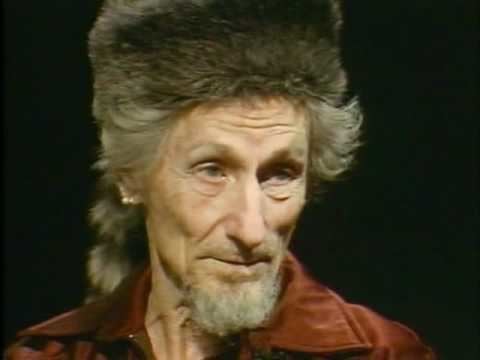
John c lilly ecco
Early life and education

Lilly was born to a wealthy family on January 6, 1915, in Saint Paul, Minnesota. His father was Richard Coyle Lilly, president of the First National Bank of St. Paul. His mother was Rachel Lenor Cunningham, whose family owned the Cunningham & Haas Company, a large stockyards company in St. Paul. Lilly had an older brother, Richard Lilly Jr., and a younger brother, David Maher Lilly. A fourth child, Mary Catherine Lilly, died in infancy.
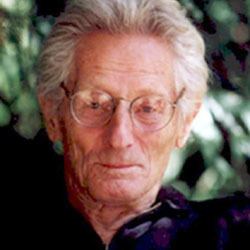
Lilly showed an interest in science at an early age. At thirteen years old, he was an avid chemistry hobbyist, supplementing his makeshift basement laboratory with chemicals given to him by a pharmacist friend. Students at his parochial Catholic grade school referred to him as "Einstein Jr." At age 14 he enrolled at St. Paul Academy, a college preparatory academy for boys, where his teachers encouraged him to pursue science further and conduct his own experiments in the school laboratory after hours.
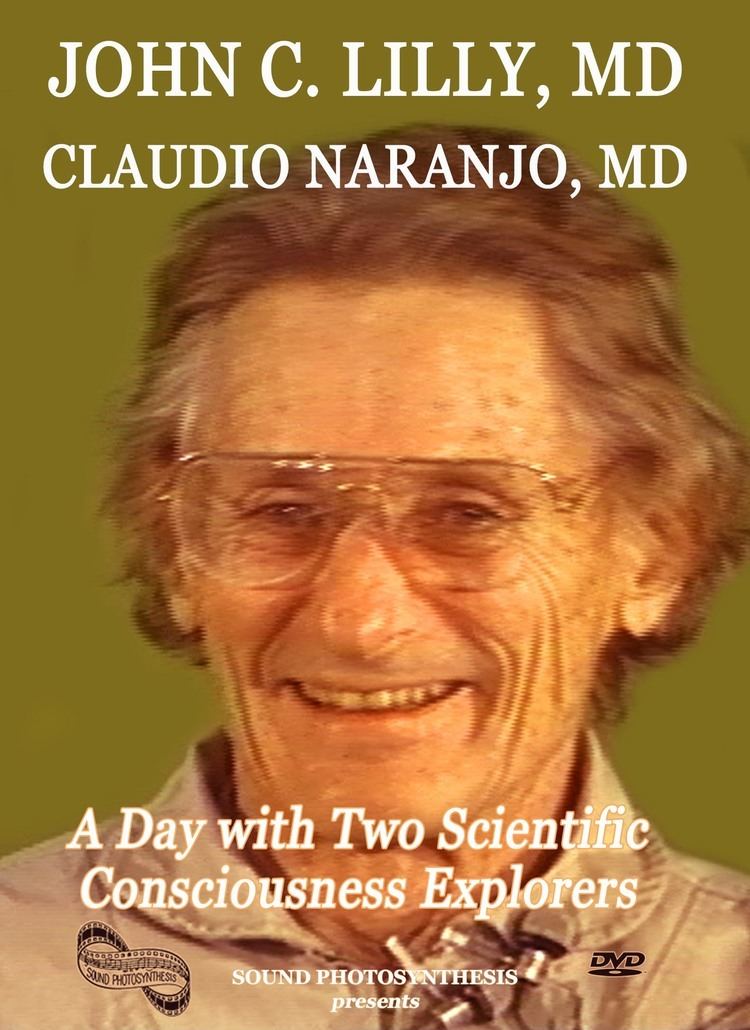
While at St. Paul, Lilly also further developed his interest in philosophy. He studied the works of many of the great philosophers, finding himself especially attracted to the subjective idealism of Anglo-Irish theologian and philosopher George Berkeley.

Despite his father's wishes for him to go to an eastern Ivy League university to become a banker, Lilly accepted a scholarship at the California Institute of Technology in Pasadena, California to study science. He enrolled in 1933 and began studying physics under such notable scientists as Robert Andrews Millikan, Paul Dirac, and Carl David Anderson. Lilly was a member of Blacker House. After his first year, Caltech administration learned that Lilly was from a wealthy family and cancelled his scholarship, forcing him to go to his father for help. Dick Lilly set up a trust fund to pay the tuition and eventually became a benefactor of the college. Lilly would continue to draw on his family wealth as a means to fund his scientific pursuits throughout the course of his life.
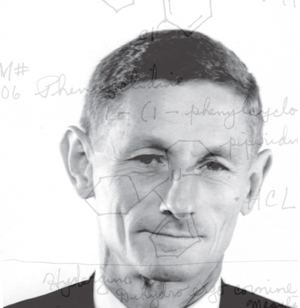
In 1934, Lilly read Aldous Huxley's Brave New World. Reading about the pharmacological control methods of Huxley's dystopia and the links between physical chemical processes of the brain and subjective experiences of the mind helped inspire Lilly to give up his study of physics and pursue biology, eventually focusing on neurophysiology.
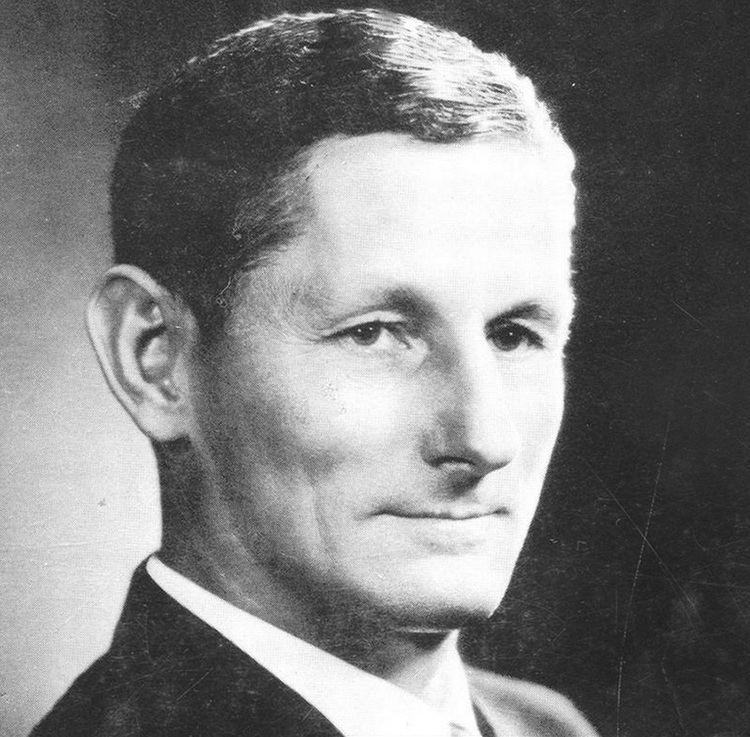
Lilly became engaged to his first wife, Mary Crouch, at the beginning of his junior year at Caltech. Months before their wedding, he took a job with a lumber company in the Northwest to soothe a bout of "nervous exhaustion" that had been brought on by the pressures of academia and his upcoming marriage. During this sabbatical he was hospitalised after injuring his foot with an axe while cutting brush. His time in the trauma ward inspired him to become a doctor of medicine.
In 1937, while Lilly was looking for a good medical school, his wealthy and well-connected father arranged a meeting between his son and Charles Horace Mayo of the famous Mayo Clinic of Rochester, Minnesota. Following Mayo's advice, Lilly applied and was accepted to Dartmouth Medical School at Dartmouth College in Hanover, New Hampshire, where he would end up becoming good friends with Mayo's son, Charles William Mayo. Lilly graduated from Caltech with a Bachelor of Science degree on June 10, 1938, and enrolled at Dartmouth the following September.
At Dartmouth, Lilly launched into the study of anatomy, performing dissections on 32 cadavers during the course of his time there. He once stretched out an entire intestinal tract across the length of a room to determine its actual length with certainty.
During the summer following his first year at Dartmouth, Lilly returned to Pasadena to participate in an experiment with his former biochemistry professor from Caltech, Henry Borsook. The purpose of the experiment was to study the creation of glycocyamine, a major source of muscle power in the human body. The experiment involved putting Lilly on a completely protein free diet while administering measured doses of glycine and arginine solution, the two amino acids that Borsook hypothesized were involved in the creation of glycocyamine. The experiments pushed Lilly to extreme physical and mental limits, he became increasingly weak and delirious as the weeks went on. The results of the experiment confirmed Borsook's hypothesis and Lilly's name was included among the authors, making it the first published research paper of his career. It would also be one of the first instances of a lifelong pattern of experimenting on his own body to the point of endangering his health.
After two years at Dartmouth, Lilly decided that he wanted to pursue a career in medical research, rather than therapeutic practice as was standard for Dartmouth medical students at that time. He decided to transfer to the medical school at the University of Pennsylvania which would provide him with better opportunities for conducting research.
At the University of Pennsylvania, Lilly met a professor named H. Cuthbert Bazett, a protege of British physiologist J. B. S. Haldane. Bazett introduced Lilly to Haldane's view that a scientist should never conduct an experiment or procedure on another person that they had not first conducted on themselves, a view that Lilly would embrace and attempt to exemplify throughout his career. Bazett took a liking to the young, enthusiastic graduate student, and set Lilly up with his own research laboratory. While working under Bazett, Lilly created his first invention, the electrical capacitance diaphragm manometer, a device for measuring blood pressure. While designing the instrument, he received electrical engineering advice from biophysics pioneer Britton Chance. Chance would also introduce Lilly to the world of computers, which was still in its infancy.
While finishing his degree at the University of Pennsylvania, Lilly enrolled in a class entitled "How to Build an Atomic Bomb". He and several other students transcribed their notes from the class into a book with the same title. The director of the Manhattan Project, General Leslie Groves, attempted to suppress publication of the book, but was unable under the grounds that no classified data on the Manhattan Project was actually used in writing the book.
Lilly graduated with a medical degree from the University of Pennsylvania in 1942.
Career overview
Lilly was a physician and psychoanalyst. He made contributions in the fields of biophysics, neurophysiology, electronics, computer science, and neuroanatomy. He invented and promoted the use of an isolation tank as a means of sensory deprivation. He also attempted communication between humans and dolphins. His work helped the creation of the United States Marine Mammal Protection Act of 1972.
Lilly's eclectic career began as a conventional scientist doing research for universities and government. Gradually, however, he began researching unconventional topics. He published several books and had two Hollywood movies based partly on his work. He also developed theories for flotation.
Lilly published 19 books, including The Center of the Cyclone, which describes his own LSD experiences, Man and Dolphin, and The Mind of the Dolphin which describe his work with dolphins.
In the 1980s Lilly directed a project which attempted to teach dolphins a computer-synthesised language. Lilly designed a future "communications laboratory" that would be a floating living room where humans and dolphins could chat as equals and where they would develop a common language.
Lilly envisioned a time when all killing of whales and dolphins would cease, "not from a law being passed, but from each human understanding innately that these are ancient, sentient earth residents, with tremendous intelligence and enormous life force. Not someone to kill, but someone to learn from." In the 1990s Lilly moved to the island of Maui in Hawaii, where he lived most of the remainder of his life.
Lilly's literary rights and scientific discoveries were owned by Human Software, Inc., while his philanthropic endeavors were owned by the Human Dolphin Foundation. The John C. Lilly Research Institute, Inc. continues to research topics of interest to Lilly and carry on his legacy.
Research
During World War II, Lilly researched the physiology of high-altitude flying and invented instruments for measuring gas pressure. After the war, he trained in psychoanalysis at the University of Pennsylvania, where he began researching the physical structures of the brain and consciousness. In 1951 he published a paper showing how he could display patterns of brain electrical activity on a cathode ray display screen using electrodes he devised specially for insertion into a living brain. Furthermore, Lilly's work on electrical stimulation of the nervous system gave rise to biphasic charge balanced electrical stimulation pulses (later known as "Lilly's wave" or "Lilly's pulses" ), which is currently an established approach to design of safe electrical stimulation in neuroprosthetics. In the 1960s he sponsored research on Human–animal communication with a dolphin.
Development of the sensory deprivation tank
In 1953, Lilly began a job studying neurophysiology with the US Public Health Service Commissioned Officers Corps. At the N.I.M.H. in 1954, with the desire of isolating a brain from external stimulation, he devised the first isolation tank, a dark soundproof tank of warm salt water in which subjects could float for long periods in sensory isolation. Lilly and a research colleague were the first to act as subjects of this research. What had been known as perceptual isolation or sensory deprivation was reconceptualized as Restricted Environmental Stimulation Technique (R.E.S.T.).
Lilly later studied other large-brained mammals and during the late 1950s he established a facility devoted to fostering human-dolphin communication: the Communication Research Institute on St. Thomas in the Virgin Islands. During the early 1960s, Lilly and coworkers published several papers reporting that dolphins could mimic human speech patterns. Subsequent investigations of dolphin cognition have generally, however, found it difficult to replicate his results.
S.E.T.I.
Lilly was interested in the Search for Extraterrestrial Intelligence (SETI) project. In 1961 a group of scientists including Lilly gathered at the Green Bank Observatory to discuss the possibility of using the techniques of radio astronomy to detect evidence of intelligent life outside the Solar system. They called themselves The Order of the Dolphin after Lilly's work with dolphins. They discussed the Drake equation, used to estimate the number of communicative civilizations in our galaxy.
Exploration of human consciousness
In the early 1960s, Lilly was introduced to psychedelic drugs such as LSD and (later) ketamine and began a series of experiments in which he ingested a psychedelic drug either in an isolation tank or in the company of dolphins. These events are described in his books Programming and Metaprogramming in the human biocomputer: Theory and Experiments and The Center of the Cyclone, both published in 1972. Following advice from Ram Dass, Lilly studied Patanjali's system of yoga (finding I. K. Taimni's Science of Yoga, a modernized interpretation of the Sanskrit text, most suited to his goals). He also paid special attention to Self-enquiry meditation advocated by Ramana Maharshi, and was reformulating the principles of this exercise with reference to his human biocomputer paradigm (described in Programming and Metaprogramming in the Human Biocomputer: Theory and Experiments and The Center of the Cyclone).
Lilly later traveled to Chile and trained with the spiritual leader Oscar Ichazo (whose attitude to metaphysical consciousness exploration Lilly characterized as "empirical" in his book The Center of the Cyclone). Lilly claimed to have achieved the maximum degree of satori-samādhi consciousness during his training.
Lilly's maxim: "In the province of the mind what one believes to be true, either is true or becomes true within certain limits. These limits are to be found experimentally and experientially. When so found these limits turn out to be further beliefs to be transcended. In the province of the mind there are no limits. However, in the province of the body there are definite limits not to be transcended."
Solid State Intelligence
solid state Intelligence (S.S.I.) is a malevolent entity described by Lilly (see The Scientist). According to Lilly, the network of computation-capable solid state systems (electronics) engineered by humans will eventually develop (or has already developed) into an autonomous bioform. Since the optimal survival conditions for this bioform (low-temperature vacuum) are drastically different from those needed by humans (room temperature aerial atmosphere and adequate water supply), Lilly predicted (or "prophesised", based on his ketamine-induced visions, a dramatic conflict between the two forms of intelligence.
Earth Coincidence Control Office (E.C.C.O.)
In 1974, Lilly's research using various psychoactive drugs led him to believe in the existence of a certain hierarchical group of cosmic entities, the lowest of which he later dubbed Earth Coincidence Control Office (E.C.C.O.) in an autobiography published jointly with his wife Antonietta (often referred to as Toni). To elaborate, "There exists a Cosmic Coincidence Control Center (CCCC) with a Galactic substation called Galactic Coincidence Control (GCC). Within GCC is the Solar System Control Unit (SSCU), within which is the Earth Coincidence Control Office (ECCO)." This conclusion had been predicted in his past works having stated that, "For the first time I began to consider that God really existed in me and that there is a guiding intelligence in the universe."
He also states that there exist nine conditions which should be followed by humans who seek to experience coincidence in their own lives.
- You must know/assume/simulate our existence in E.C.C.O.
- You must be willing to accept our responsibility for control of your coincidences.
- You must exert your best capabilities for your survival programs and your own development as an advancing/advanced member of E.C.C.O.'s earthside corps of controlled coincidence workers. You are expected to use your best intelligence in this service.
- You are expected to expect the unexpected every minute, every hour of every day and of every night.
- You must be able to maintain conscious/thinking/reasoning no matter what events we arrange to happen to you. Some of these events will seem cataclysmic/catastrophic/overwhelming: remember stay aware, no matter what happens/apparently happens to you.
- You are in our training program for life: there is no escape from it. We (not you) control the long-term coincidences; you (not we) control the shorter-term coincidences by your own efforts.
- Your major mission on earth is to discover/create that which we do to control the long-term coincidence patterns: you are being trained on Earth to do this job.
- When your mission on planet Earth is completed, you will no longer be required to remain/return there.
- Remember the motto passed to us (from G.C.C. via S.S.C.U.): "Cosmic Love is absolutely Ruthless and Highly Indifferent: it teaches its lessons whether you like/dislike them or not."
Death
Lilly died at the age of 86 years in Los Angeles on September 30, 2001, due to heart failure. His remains were cremated.
In popular culture
Lilly's work, with dolphins and the development of the sensory deprivation tank, has been referenced in movies, music and television productions. Dolphin Island: A Story of the People of the Sea is a 1963 novel by Arthur C. Clarke set in a strange and fascinating research community where a brilliant professor tries to communicate with dolphins. In the 1972 novel The Listeners, Lilly and the other scientists who were members of the Order of the Dolphin are mentioned as pioneers. In the 1973 movie The Day of the Dolphin, George C. Scott portrayed a Lilly-esque scientist, known to the dolphins as "Pa", who succeeded in teaching a dolphin to speak elementary English.
The 1980 movie Altered States, based on Paddy Chayefsky's novel of the same name, features actor William Hurt regressing to a simian form by the combination of ingesting psychoactive substances and then experiencing the effects of prolonged occupation of a sensory deprivation chamber.
In the 1992 Sega video game Ecco the Dolphin, the player guides an intelligent dolphin through increasingly surreal psychedelic challenges. The game's producer, Ed Annunziata, has confirmed being an avid reader of Lilly's works.
Layer 09 of the 1998 Japanese animation series Serial Experiments Lain makes reference to E.C.C.O. and Lilly's work with dolphins. The episode deals with the development of Protocol 7, a modification of The Wired, which is expected to network all humans without the need of a device. The result will be that Earth's consciousness will awaken as people become linked nodes in The Wired network. This is compared to Lilly's view that dolphin communication is a form of long-distance networking.
Oysterhead's 2001 album, The Grand Pecking Order, includes the song "Oz is Ever Floating" which includes numerous references to Dr. John C. Lilly.
